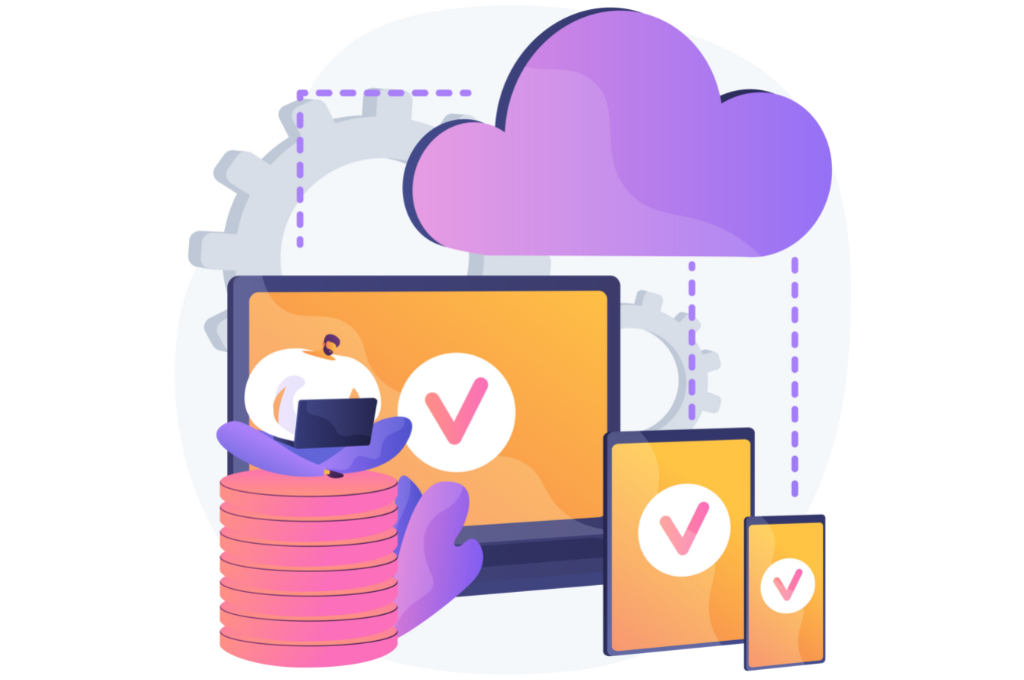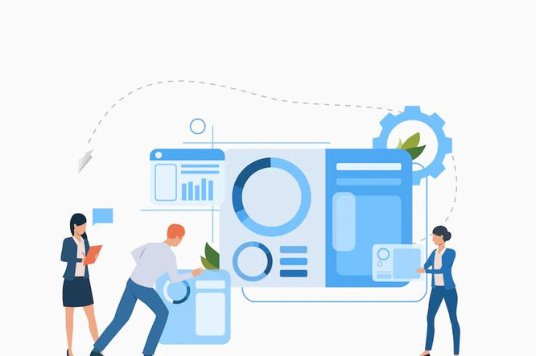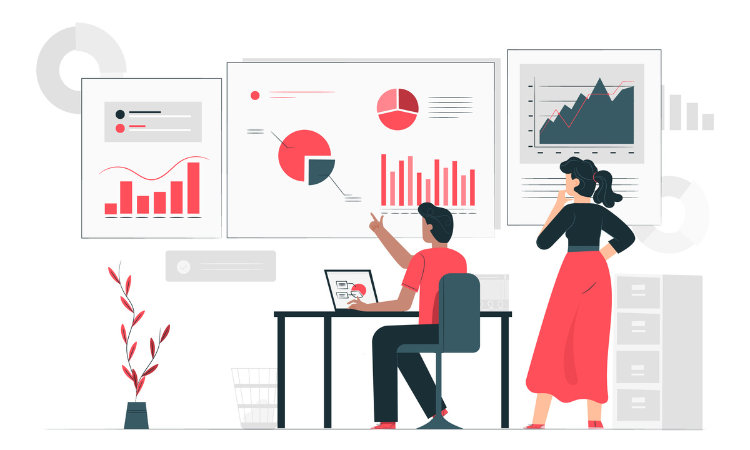People often assume that business decisions are based on gut instinct or intuition. "The CEO has a good feeling about this new product," you might hear. or "The board members feel confident that the strategy will pay off."
But the fact is, most companies base their "hunches" on data and analytics. These decisions are popularly known as data-driven decisions because they rely more on the data produced by evidence than on intuition.
For those of you who are not data scientists, the idea of working with analytical data can be daunting. So here is the secret sauce; you don't have to be a guru in data analytics, be fluent in data analytic tools or even know how to use R-programming language to make informed business decisions.
The article below will explore the inside out of online business analytics, its types, and how it can help you make better data-driven decisions for improved business processes.
By the end of this article, you will have a complete grasp of what business analytics is and capitalize on your business strategies like a pro, which may inspire you to look into creating a risk management plan
Business Analytics Defined
Business analytics is the process of extracting valuable insights and knowledge from data. Its purpose is to help you make more informed and effective business decisions. Online business analytics is beneficial for predicting market trends, consumer and employee behavior, the value of having a development team dedicated to your project, determining whether a new technology may improve productivity, and even your competitors flair. The possibilities are endless!
Business intelligence (BI) is a subset of business analytics that focuses on using structured data from the B2B sales database—such as sales figures, customer information, or product inventory level. It helps you gain insight into your current business state. Data science is another subset that uses unstructured data sources to predict future trends.
Four Types Of Business Analytics
The use of analytics is on the rise. According to the 2018 Digital Marketing Trends Survey, 77% of companies now use data to drive marketing decisions, which is up from a mere 28% in 2016.
But why?
Because business leaders are now more data-driven in their decision-making and are using descriptive, diagnostic, predictive, and prescriptive analytics. Let us explore each one in detail.
-
Descriptive Analytics
It is the primary and simplest form of data analytics with a snapshot of the state of a business or process. It consists of current and previous data that gives insight into your business processes and operations.
Descriptive analytics helps you comprehending past events or in a particular time frame by providing data on past trends and outcomes. By describing existing data sets in graphical form, the descriptive analysis also gives you a better understanding of how things work so you can plan for the future.
-
Diagnostic Analytics
Coming second in line is diagnostic analytics, is the process of using historical information to understand the root cause of data.
Diagnostic analytics will help you figure out the reasons for problems within your business or organization so that you can fix them before they become uncontrollable. By investigating it, you can determine potential solutions for the future complications.
-
Predictive Analytics
Predictive analytics uses a blend of trending and historical data to predict the future outcomes- customer behavior and the likelihood of future events. Predictive analytics helps companies understand their customers and processes. Using statistical models generated from historical data points, predicting outcomes based on current conditions helps organizations prepare accordingly for the current needs while taking tomorrow opportunities.
Predictive analytics can also be used for other purposes, such as forecasting fraud or predicting when maintenance is needed. The goal is to help businesses make more informed decisions with greater certainty and confidence in the results they generate through data analysis processes.
-
Prescriptive Analytics
Prescriptive analytics provide solutions. Analysis uses real-time data to recommend actions based on insights from predictive models.
Prescriptive analysts examine trends and patterns along with expected future scenarios. And then suggest actions based on those trends/patterns/scenarios which will lead to specific outcomes.
Let say, for example, that you have noticed that sales have been declining over the last few months. You have also noticed that this drop correlates with overhead costs and time spent by the employees on social media platforms, editing images manually rather than using preset tools to make them more efficient. Prescriptive analytics techniques such as data mining or predictive modeling can enable you to determine whether there is any connection between these two trends.
The approach would allow companies to modify their strategies based on real-world feedback rather than guesswork which helps them avoid costly mistakes.
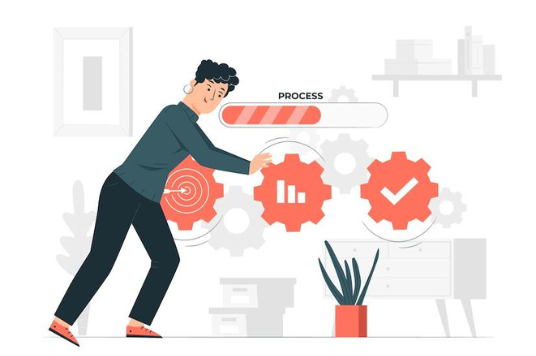
Operational BI Vs. Strategic BI
There are two sides to online business analytics: operational BI and strategic BI. Both are important in their ways.
Operational Business Intelligence (BI)
Operational BI is about making decisions in real-time, usually based on data available you need it. Operational BI focuses on day-to-day operations, like customer satisfaction and sales numbers. Google Analytics and Salesforce are examples of an Operational BI tools, as well as additional apps that can be integrated with Salesforce to improve customer experience. Such tools help businesses track how customers interact with them online or in person.
Strategic Business Intelligence (BI)
Strategic BI looks further into the future than operational BI does. It focuses on long-term goals rather than day-to-day tasks like sales numbers or customer satisfaction scores (although those things may still play a role).
Take, for example, Medical Alert Buyers Guide and KURU. These companies make decisions based on analytics that shows where they are or how far they have come. It is helping both these companies set goals for success in the future.
The Essentials Of Data-Driven Decisions
Before we get into the essentials, let us go through the fundamentals of data-driven decision-making (DDDM):
-
What Is Data-Driven Decision-Making (DDDM)?
Data-driven decision-making is the process of using relevant facts and figures to make informed business choices. In contrast, a data-based decision, relies on gut instinct or experience rather than facts from actual numbers.
-
What Are The Steps To Make Effective Data-Driven Decisions?
There are definite steps an organization should follow to make effective data-driven decisions.
Foremost, you should be aware of your business goals. It could be anything from increasing sales to bringing more hits to your website. Conducting a SWOT analysis will help you collect the relevant data instead of putting in effort for something the business is not aiming at.
Before collecting data, you must ensure that you have valuable input from your team to pinpoint the short-term and long-term goals. From there on, collecting the relevant data and visualizing it is of utmost importance. Once represented in graphs and charts, it becomes easy to gain insights into problem-solving or risk-taking using RDF database software. The final step is to create a risk management plan, or plan of action, and take the right action for your discovered judgments.
-
Why Are Data-Driven Decisions Important?
To be successful in business, you need to learn how to analyze your data and make decisions based on what it tells you. The rate at which technology changes have made it more difficult for companies to stay competitive in their markets - and if they don't react quickly, they'll be left behind by their competitors who are willing and able to adapt as needed.
As a result, businesses must be better at making significant decisions based on what their customers want to improve their products/services accordingly - and continue offering competitive prices.
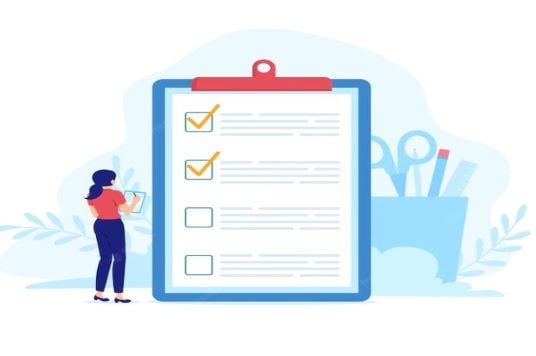
DDDM Framework: 5-Step Process For Making Data-Based Decisions
Step 1 - Problem Identification
The first step in the data-driven decision-making process is to define the problem. It means finding a solution, and how would you know if it is successfully implemented.
Step 2 - Set Goals and Objectives
It’s also essential to set goals before beginning any project or task. Without clear objectives, it is easy to get lost in all of the possibilities available to you and lose focus on what you want from your work.
However, if your goal is too lofty, then maybe try setting an intermediate one and working backward from there - the important thing is that whatever path forward you choose, it leads somewhere tangible and measurable.
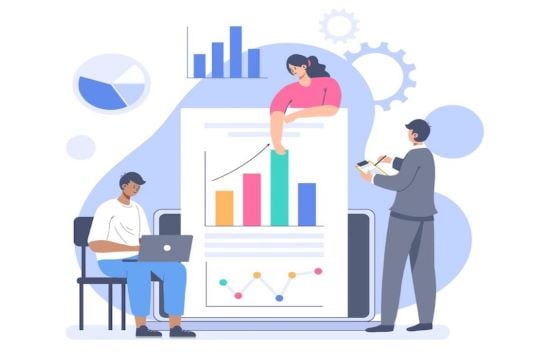
Step 3 - Collect Key Data
The third step consists of collecting the primary data. Make sure that the data you collect is relevant to the challenges you've identified and the goals you've established for yourself. Businesses are using various methods to collect data, including voice feedback surveys and conventional surveys. In addition to the mentioned methods, businesses can also consider using a CAPTCHA proxy for large-scale data collection. This method can be useful in bypassing anti-bot measures on websites and ensuring your IP address doesn't get blocked
Another emerging data collection method involves technology that allows you to scrape the web without being blocked, hence acquiring more extensive relevant data. But whatever method you choose, remember that precision and accuracy are essential to data gathering. Without formulating potential customer surveys, the entire process will be derailed since the data will be irrelevant and erroneous.
Step 4 - Analyze Your Data
The data you’ve gathered is just facts and numbers. They won’t be of any help if you don’t analyze them properly. You should be well-equipped to comprehend what the data is trying to communicate. Convert the data into an easy, comprehensible form. Review to ensure that the data is organized properly and doesn't miss any key information. Before jumping to conclusions, analyze it thoroughly to extract valuable information.
Step 5 - Create A Strategy And Put It Into Action
Now that you've gathered all of the necessary data and information, it's time to bring it all together to create a strategy. Always keep in mind the purpose of this entire exercise when doing so. Create a measurable, exact, and detailed strategy based on the findings of your data analysis.

Business Analytics Is Essential For Data-Driven Decision
Business analytics is essential for making sound, data-driven decisions. Data is the fuel on which data-driven decision-making runs. As companies across industries are increasingly turning to online business. The business analytics software is helping businesses make more informed decisions as the ability has become a competitive advantage—especially in markets where it’s essential to be agile and adaptable.
Businesses have been using data to build their business strategies, but only recently has technology enabled them to scale. The trend is driven by new enterprise platforms that offer affordable tools for collecting and analyzing large volumes of structured and unstructured data in real-time.
Doing so helps organizations gain insights into areas such as finance, accounting, supply chain management, recruitment process outsourcing, human resources management, customer relations management, project management, and more.
Big Data And The 5 V's
A large amount of information is analyzed to identify patterns that can be used for decision-making. Big data refers to all the data that's available today. It's digitized information from websites, social media sites, sales and marketing records, customer information, and financial transactions. The term "big" means how much bigger it is than traditional datasets.
By leveraging different toolsets like machine learning algorithms or decision support systems (DSS), the process can also be automated. As a result, companies can have 24/7 access to these dynamics without constant human monitoring.
The 5 V's of big data are:
- Volume
- Variety
- Velocity
- Veracity
- Value
These 5 V’s show the true traits of big data. Although it is not necessary for organizations to follow these Vs, following these will surely improve the quality of the collected data and add more value to it.
- Volume
Volume refers to the amount of data being collected or generated every second. As it's growing at an exponential rate, it has become the foundation of big data trends. The input of collected data should be confined to the purpose it is being collected. Over the years the volume of the data collected by businesses has reached sky-high.

- Variety
Variety is about the diversity of data being collected. Data collected can be structured, unstructured, or semi-structured. Everything from customer reviews and tweets to photos, videos, and software logs contribute and synthetic monitoring data different kinds of information that need to be considered together when making business decisions.
- Velocity
Velocity refers to the dynamics of the data collected. It shows how quickly these sources are changing—or "flowing." Data can be achieved in real-time or streamlined in batches. By knowing how fast things change around us in real-time (think about Twitter), we can act according to its pace—whether it's responding immediately or creating new products based on current trends or user feedback received through different methods. Also, this could avoid breaching of unsecured data as well.
- Veracity
Veracity is the reliability of the collected information. It refers to how accurate all the collected data is—and how quickly errors get corrected. The more trustworthy the sources are (like survey results), the better the decisions will be.
The quality and reliability of the data are extremely important for making sound decisions. It is a game-changer that can make or break the whole scenario for an organization.

- Value
If big data were a pyramid, the value would be placed on top of it. The value defines the quality of the collected data given to a business. Big data might be useless if an organization does not extract good value from it. Data collected that has no value to improving operations is an energy and efficiency loss.
Choosing The Right Business Intelligence Tools
Business intelligence tools provide an interface to your collected data while deciphering into value for the company. These tools, through reporting and visualization help in better decision-making of your organization. Some companies are even offering the development of customized software solutions to meet the needs of a particular business.
Before you can begin to use business intelligence (BI) tools and techniques, you must select the right toolset for your team. There are many factors to consider when choosing BI tools:
- To kick off, evaluate your data trend. You might need to analyze sales data or combined data from social media.
- Data management is a key factor to keep in mind while going for a particular BI tool. You should be able to tell what connectors your BI tool offers, given the diversity of data management solutions available. The longer the list of connectors, the more compatible it would be with different data types.
- A third-party service to pull data in a warehouse can be costly. So knowing your budget is crucial that will enable your purchase of hardware and software.
- The initial setup process for the tool can be hard for people who are not skilled to understand. Outsourcing training for naive employees can take up a chunk of time and budget as well.
- A good dashboard and an easy interface will facilitate efficiency.
- Your tool should be flexible enough to give you greater control over the data analysis process. A flexible tool will help you with the dynamics of business needs and meet future needs. A fixed set of features might cost less but they will prove to be stagnant for future needs.

Conclusion
We’re seeing a revolution in business as more and more leaders are becoming data-driven rather than making decisions based on intuition. It can have a huge impact on the future of any company and its employees, so if you’ve never heard of the term “business analytics” before it’s time to get familiar with it.
With so many surveys and feedback options to choose from, you can collect the right kind of information that will help make informed business decisions. Also, the ability to customize these tools will make the implementation process smoother which might make all the difference between failure or success for your company.













